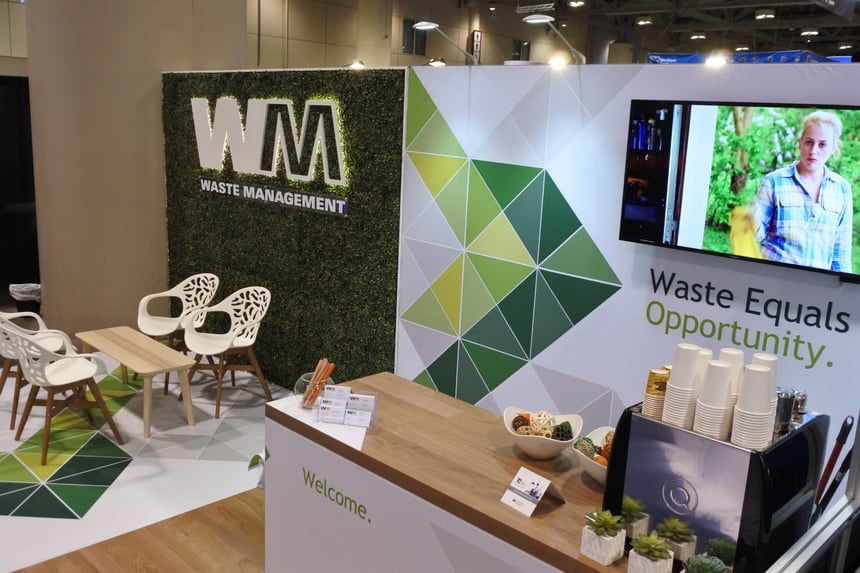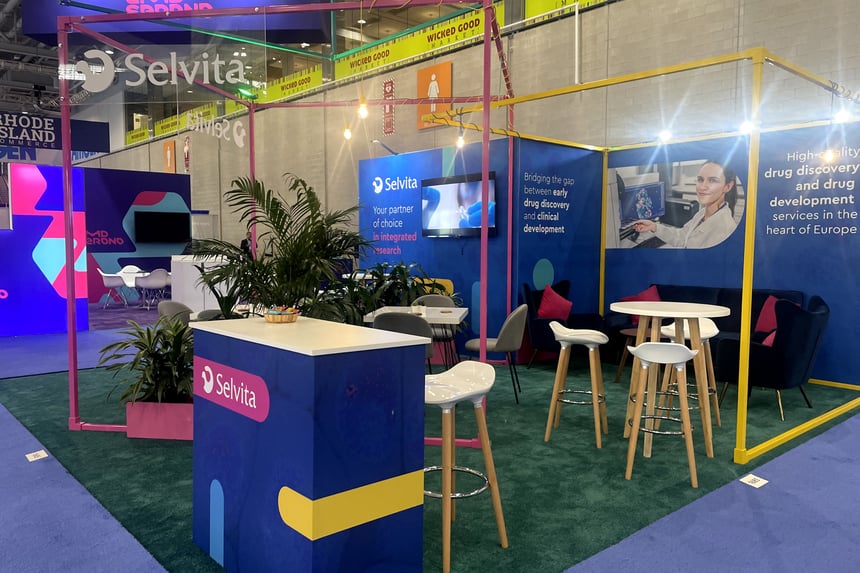Sustainable Exhibition Designs: A Path to Success
The buzzword "sustainability" isn't just a fad; it's a commitment to a better future. As you sit down to chalk out your next big exhibition or trade show, you might find yourself pondering the sustainability of it all.
With questions like; What are sustainable exhibition materials? How do I ensure I create a sustainable exhibition stand? Or even why is sustainable design important at all?
At NeosCreative, we get it. We understand the intricate balance between creating a show-stopping event and being kind to Mother Earth. This blog is your go-to guide for unravelling the complexities and finding real solutions to helping create more sustainable exhibition stands. At the end you’ll be able to download your very own Sustainability Planner for your next Exhibition.
Before looking at solutions, let's take a look at the astonishing figures about sustainability of the Exhibition industry:
- Events Industry Council’s (EIC) 2012 study stated that the meetings and events industry in the United States alone generates more than 600,000 tons of waste annually.
- The exhibition industry itself is estimated to generate around 170,000 tonnes of waste per year in the UK alone.
- A typical three-day trade exhibition can consume up to 480,000 kWh of electricity which is equal to 48 households' usage during a whole year.
- A 2020 report from MCI Group suggests that an estimated 85% of all event banners, signs, and booths used for events are for single use and often end up in landfills.
- As per UFI's Global Exhibitions Day 2020, despite some growing interest in sustainable practices, only around 46% of companies in the exhibition industry currently have a sustainability strategy in place.
These statistics highlight the substantial environmental footprint of the exhibition industry and emphasize the need for more sustainable practices in the sector, and for businesses to start putting a sustainability strategy in place…… We’re here to help with that.

The dilemma of being sustainable yet stunning
Imagine you're about to launch into an industry-defining exhibition. You're stoked, excited, but also a bit uneasy. Your discomfort springs from the awareness that these grand events aren't exactly eco-friendly. They eat up resources, produce waste, and leave a sizable carbon footprint. So, what's the challenge? Well, you want to dazzle the attendees without being a strain on the planet.
Let's explore the common roadblocks:
- First, exhibitions aren't exactly zero-waste events. From promotional materials to stage decor, from staff travel to visitor travel, the waste is palpable.
- Second, it's a maze out there when it comes to finding eco-friendly materials and suppliers. A lot of homework is needed, and it's anything but easy.
- Third, the word on the street is that going green is an expensive affair. Budgets can get crunched if you're not careful.
- Fourth, there's the ever-present fear that sustainable equals bland. You still want to be the belle of the ball and not fade into the background.
- Lastly, let's not forget about measuring your green efforts. How do you even begin to quantify the ecological gains of choosing a sustainable exhibition path?
It's time to arm you with solutions that are as workable as they are innovative.
Materials
One essential consideration in sustainable exhibition stand construction is the choice of advertising surfaces. PVC-free print media, for example, emit fewer harmful substances into the environment and can be printed using water-based ink, instead of solvents.
Furthermore, embracing items such as flooring and furniture constructed from sustainable materials like bamboo or hemp sends out a prominent sustainability message. Not only are these materials renewable, but they also generate less waste, making them an attractive choice.
Another sustainable solution is to choose modular stands, which can be reused multiple times, reducing both waste and costs. Renting certain elements of your stand is another simple way to be more sustainable because these items can be reused by the supplier for future exhibitions.
logistics
Working with local suppliers offers several environmental and logistical benefits. In terms of Sustainability the key is significantly reduced transport emissions.
Shorter Transportation Distances: Local contractors are typically located nearby, which reduces the distance materials and equipment needs to travel. This results in lower greenhouse gas emissions associated with transportation.
Lower Fuel Consumption: Shorter distances mean less fuel is consumed during transit, reducing the carbon footprint of your project.
At NeosCreative, we specify that all of our sub-contractors are within a 25mile radius of the exhibition venue. This immediately reduces the environmental impact caused by transportation.
Not only is this more sustainable it also allows for faster turnaround times:
- Local contractors can respond more quickly to your needs, which can be especially beneficial when you have tight deadlines for exhibition setup.
- Reduced Lead Times: You may experience shorter lead times when sourcing materials locally, as you can avoid the delays often associated with long-distance shipping.
As well as allowing for better quality control: Better Quality Control. You can easily visit local suppliers and contractors to inspect materials and monitor progress, ensuring that your project meets quality standards, just like we do!

cost
Let's put the myth to rest: Going green doesn't mean breaking the bank. We offer budget-friendly alternatives without compromising on quality or impact.
Implementing sustainability practices for your exhibition stand and logistics doesn't have to be costly. In fact, many sustainable choices can lead to cost savings in the long run. Here are some ways to make sustainability cost-effective:
Long-Term Savings: While some sustainable materials and technologies may have higher upfront costs, they often have lower operational and maintenance costs. For example, energy-efficient lighting and HVAC systems can reduce ongoing energy expenses.
Reuse and Recycle: Opt for reusable or recycled materials whenever possible. These materials can sometimes be more affordable than non-sustainable alternatives, and they often have a lower environmental impact.
Eco-Friendly Design: Sustainable design, such as modular components, can lead to cost savings by reducing construction and transportation expenses. Modular designs are easier to assemble and disassemble, saving time and labour costs.
Waste Reduction: Minimize waste during construction and at the event itself. Wasting less material can save money on disposal and reduce the need for additional materials.
Government Incentives: Explore government incentives, grants, and tax benefits available for sustainable practices. In some regions, there are financial incentives for businesses that adopt eco-friendly measures.
Energy Efficiency: Investing in energy-efficient technologies can result in reduced energy bills. Energy-efficient lighting, heating, and cooling systems often pay for themselves over time.
Finally…..Aestheics
And let's not forget aesthetics—the bread and butter of any memorable exhibition. Our design team knows a thing or two about making sustainable stands look sexy. You won't be just another booth; you'll be the one everyone remembers and talks about. Actually, we prefer the term re-usability. So not only does your stand look great, it does this on repeat, a proven and positive sustainability technique!
Waste we've tackled head-on. From conception to curtain fall, our focus is on minimizing waste in a measurable way, so you'll know exactly how much waste you've prevented.
The Roadmap to a Sustainable Exhibition Stand
You don't have to go it alone; we've chalked out a roadmap for you with our downloadable Sustainability Planner. Start by defining your sustainability goals clearly, know what you're aiming for, and we'll help you hit the target.
Why Settle When You Can Excel with NeosCreative?
Sustainability is not a ‘nice to have’; it's a 'must-have' for modern, responsible event planning.
Ready to join the ranks of these eco-warriors? Let’s chat. No strings attached, just good old-fashioned advice on making your next exhibition both green and grand.

Comments